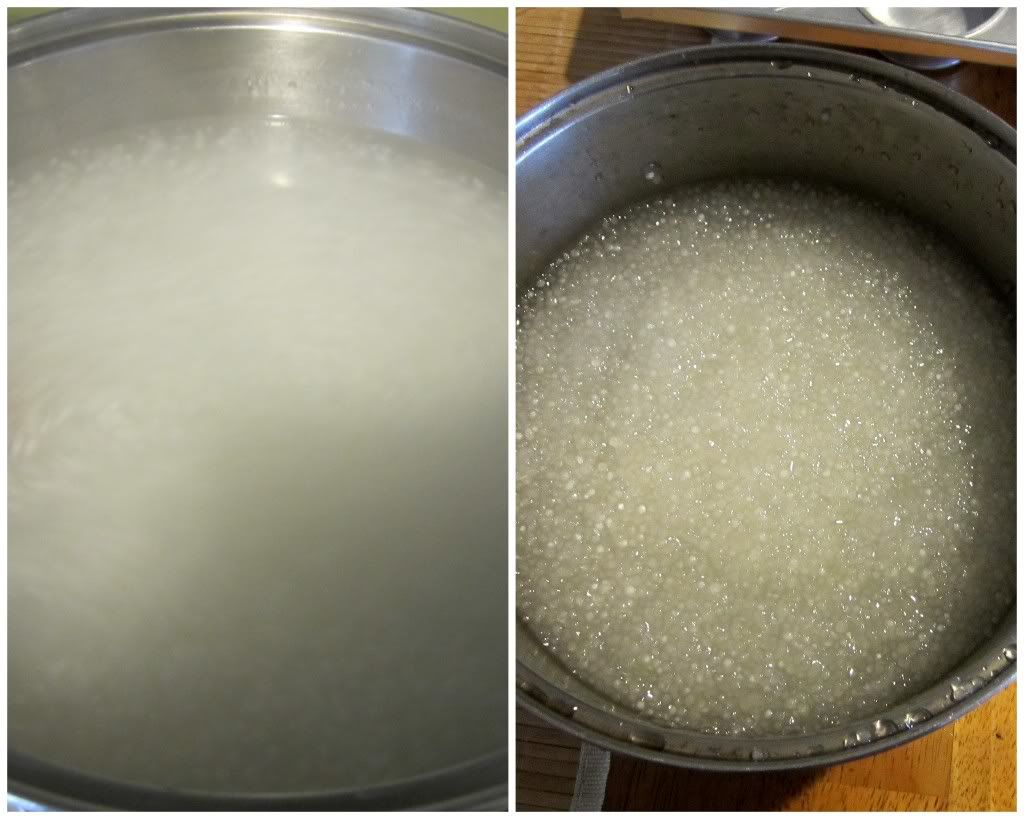Sago Gula Melaka is a quintessential Malaysian dessert that originated from the port city of Malacca. This dessert comprises of three parts, the sago pudding, coconut milk (santan) and Gula Melaka.
The insipid sago when drenched with creamy coconut milk and a healthy drizzle of sweet caramel-like syrup becomes a wonderfully rich dessert you want to tuck into over and over again.
Sago is a form of starch extracted from the pith of sago palm stems which are now commercially produced in the shape of ‘pearls’. These pearls take the form of dry opaque balls not more than 2 mm in diameter. Boiling sago can be a messy affair as the excess starch tends to get everywhere and can be quite the nightmare to remove. Don’t let this put you off though because the end results is something that will definitely impress!
Gula Melaka is palm sugar which is extracted from the sap of the flower bud of a coconut tree which then boiled until thickened and packed into bamboo tubes forming its cylindrical shape. The colour varies from dark brown to a light golden colour. It is widely used in South East Asia to flavour desserts, salads and even curries.
Screwpine leaves, or pandan leaves as they are locally known is a fragrant plant used to infuse fragrance to dishes and also to add colour. I find that it is used in the same way vanilla is used in the West.
In terms of the availability of these products, it is not hard to find. I would recommend popping into your nearest Asian grocer or even the Asian isle of the bigger grocery stores. Living in the UK for the past number of years, I have always easily located these items.
Sago Gula Melaka
Yields 12 portions
Ingredients
300 grams small sago pearls
250 grams Gula Melaka (Palm sugar)
½ teaspoon granulated sugar
300 ml coconut milk/cream
3 pandan leaves
Water
Pinch of salt
Method
Sago
- It is vital to use the biggest pot you have available as the more water used to boil the pearls, the less likely the pearls will stick to one another.
- Heat a pot of water and bring it to a boil. In the meantime, soak the pearls in cold water for 15 minutes. Once the water is boiling, add the sago and stir frequently to prevents the pearls from sticking to the bottom of the pot.
- When the pearls turn partially translucent, with the white centre remaining, remove the pot from heat, put the lid on and leave it for 5 minutes. The boiling process should take no more than 3-4 minutes, any longer and the pearls will turn mushy and into glue.
- Pour half the water out, using a sieve at all times to catch the now translucent pearls. Rinse pearls with cold water 2-3 times to remove excessive starch.
- Spoon sago pearls into muffin moulds. If you prefer to have your guests scoop up their own portions, use a casserole dish. Also a little tip, wet moulds allow for easy removal.
- Refrigerate for 3-4 hours until sago pearls are set.
Gula Melaka
- Melt the Gula Melaka with sugar, pandan leaves and half cup of water over a very low heat until a thin syrup is formed. If needed, add more water by the tablespoon until you get the consistency you want.
- It may take a while to dissolve but don’t be tempted to turn up the heat. Sieve the syrup to remove impurities and set aside to cool.
Coconut milk
- Heat up coconut milk/cream and add a pinch of salt, which brings out the sweetness of the palm sugar.
To assemble, put chilled sago into a bowl, drizzle Gula Melaka and coconut cream over it and serve.
Sago being boiled; Boiled sago
Cupcake tins are the perfect sago moulds
Pandan leaves, gula Melaka and a pinch of salt




